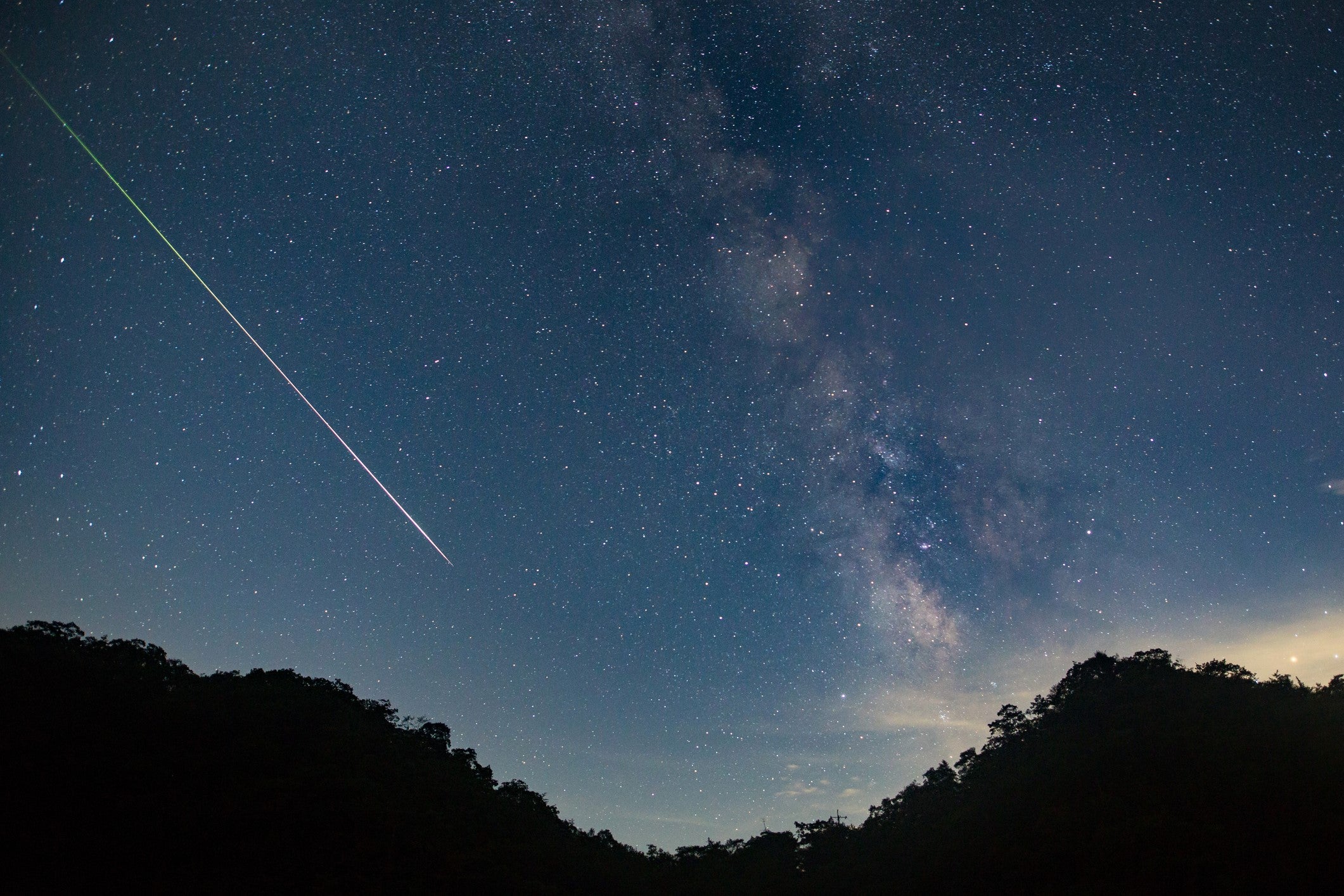Draconid meteor shower: How to see shooting stars light up night sky tonight
Draconids will produce around 10 shooting stars per hour at their peak

The annual Draconid meteor shower is set to peak on 8 October, offering skygazers in the Northern Hemisphere a rare chance to witness dozens of ‘shooting stars’ light up the night sky.
Astronomers predict that around 10 meteors will be visible every hour at its peak on Tuesday evening, though meteors may continue appear on Wednesday night.
The Draconids are one of the most variable meteor showers of the year, with Nasa noting that in exceptional circumstances it can produce up to 10,000 shooting stars per hour.
The US space agency also notes that it is also one of the briefest displays, as most activity takes place around the peak time.
“Meteor showers are generally short-lived; durations can range from a few weeks and, within those periods, most of the activity occurs near a ‘peak’ time,” Nasa notes in its meteor forecasting guide.
“This is particularly true for the Draconids, which tend to maintain at least half their maximum activity for only a few hours.”
The Draconid meteor shower – which appears each year when Earth passes through the tail of the comet 21P/ Giacobini-Zinner – is named after the Draco the Dragon constellation from which they appear to radiate.
The best time to see them is in the evening when then Draco constellation is in the northern sky
The best place to view them is in areas of low light pollution, so skygazers are advised to head to rural areas and allow half an hour to allow their eyes to adjust to the dark.
Current forecasts from the Met Office suggest that large parts of the UK will be covered by cloud on Tuesday evening, though there will be brief breaks to observe the celestial spectacle.
The Moon will only be at a quarter of its brightness, offering a better chance to see the shooting stars.
October will also see the arrival of the Orionid meteor shower, which is expected to be an even more spectacular display.
Join our commenting forum
Join thought-provoking conversations, follow other Independent readers and see their replies
Comments
Bookmark popover
Removed from bookmarks